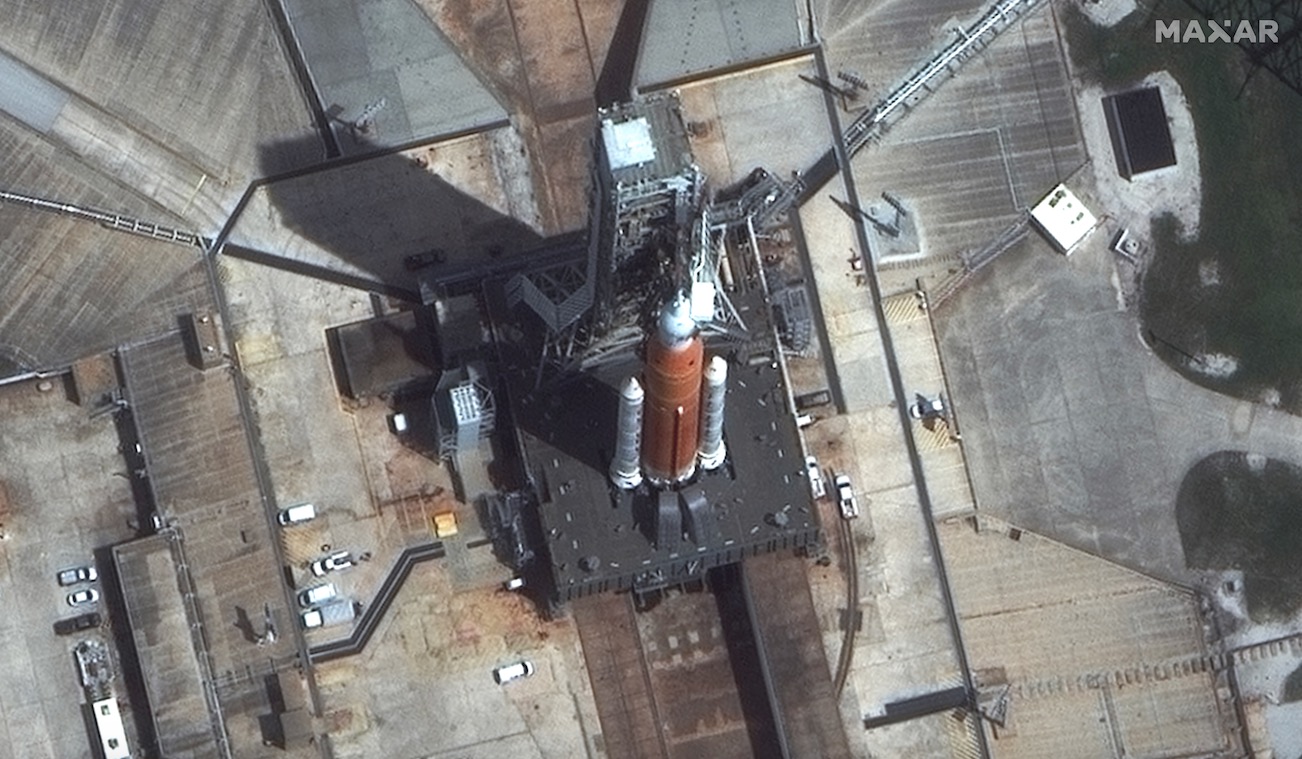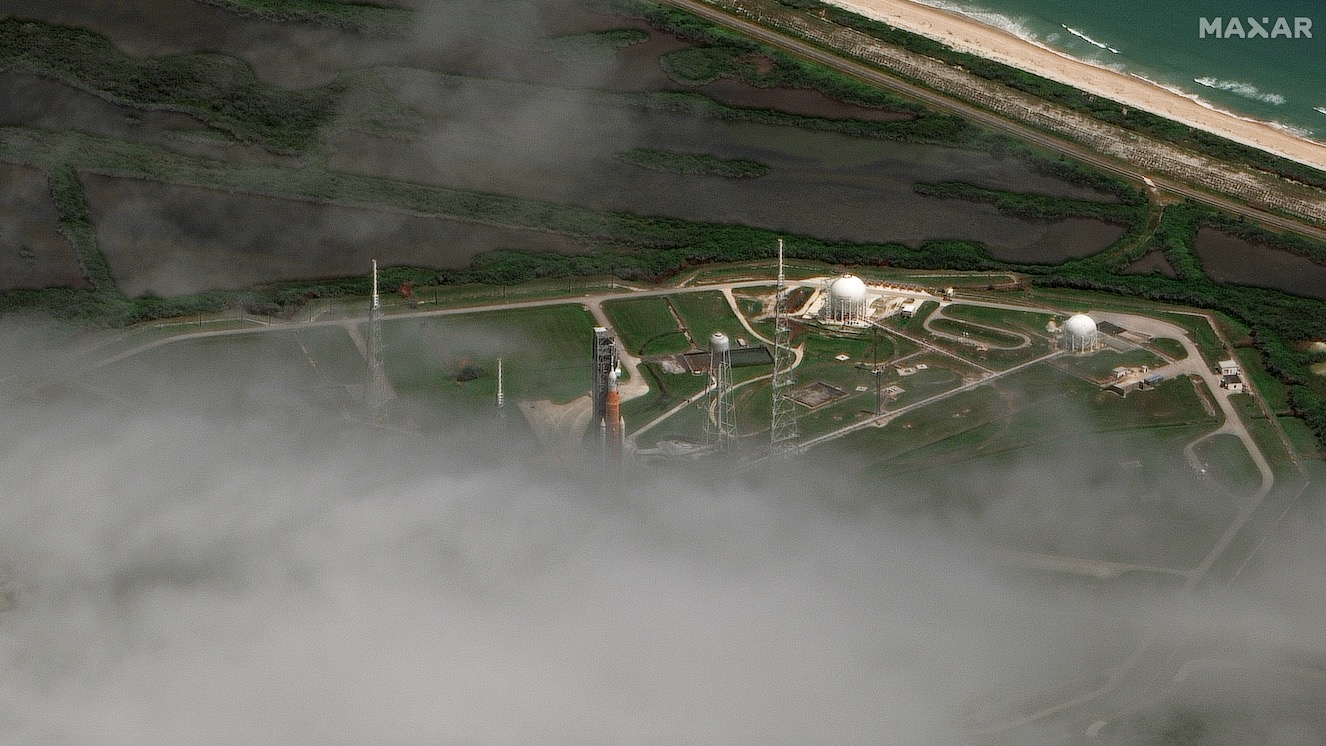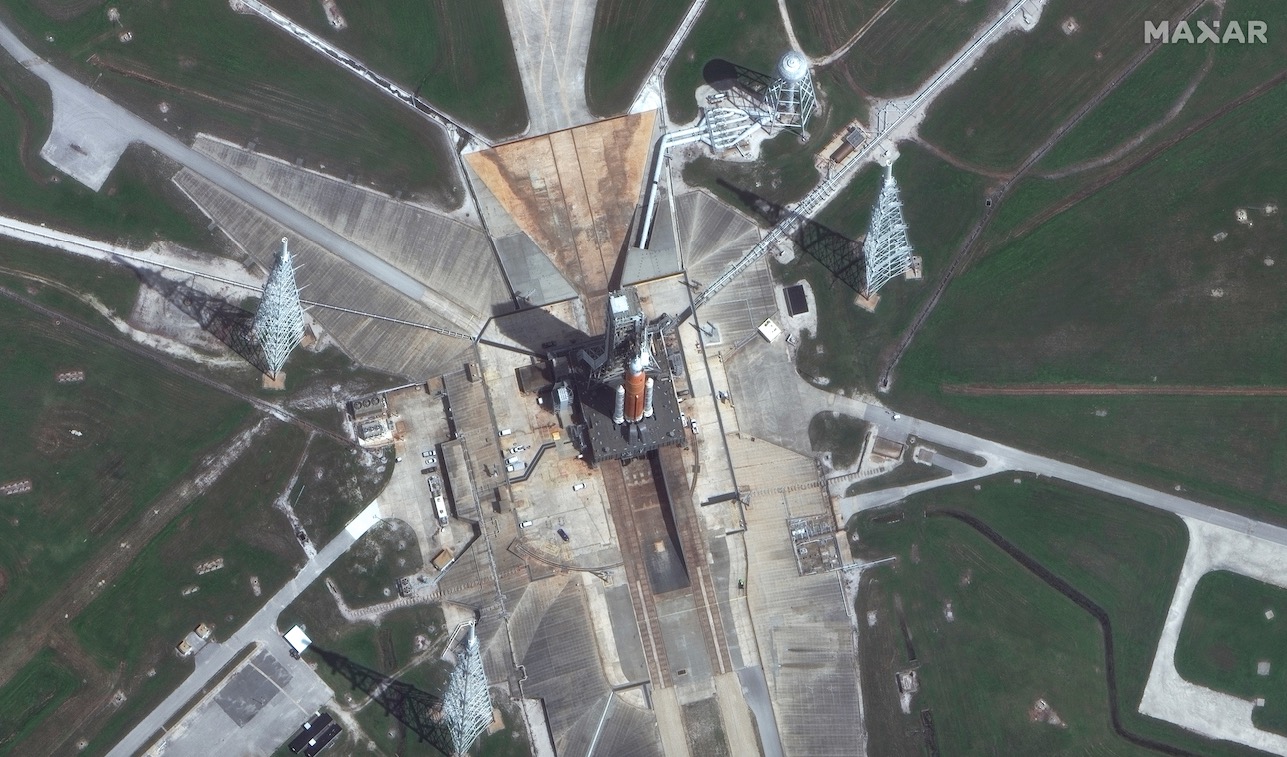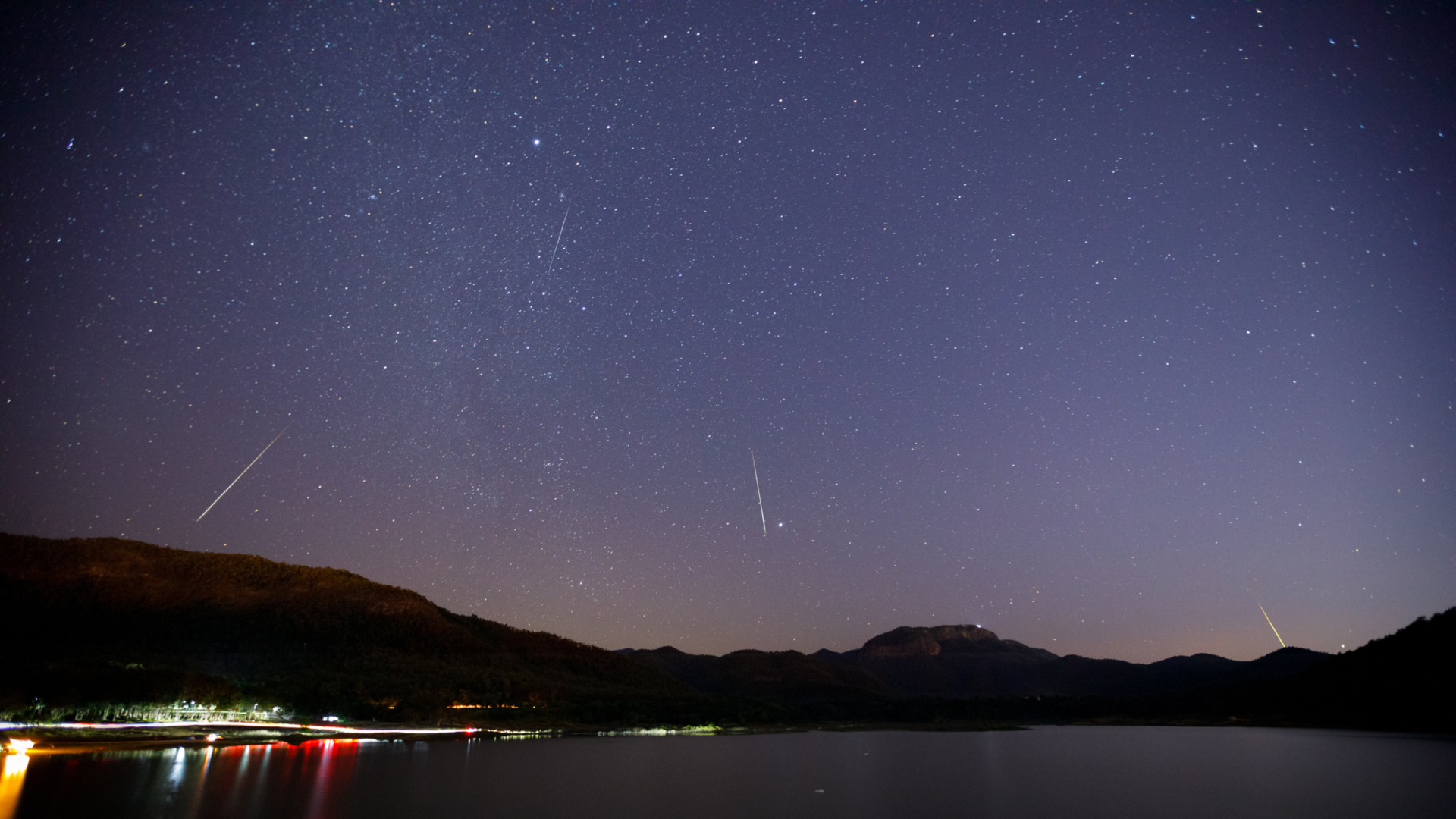NASA's Artemis 1 moon rocket spotted from space (satellite photos)

A satellite has given us stunning bird's-eye views of NASA's towering Artemis 1 moon rocket, just a few days before the huge vehicle leaves Earth.
Maxar Technologies' WorldView-3 satellite snapped two shots of the Artemis 1 stack on Wednesday (Aug. 25) as it sat on Launch Pad 39B at NASA's Kennedy Space Center (KSC) in Florida.
"Our first image was collected more directly looking down from the satellite's orbit toward the KSC," Maxar representatives wrote in an emailed description of the photos on Wednesday.
"The second image (which we call a high off-nadir collection) was collected while the satellite was south of Cuba (nearly 700 miles [1,125 kilometers] southwest of the KSC) and was looking back at a steep angle to the launch pad," they added.
Related: NASA's Artemis 1 moon mission: Live updates
More: NASA's Artemis 1 moon mission explained in photos

The Artemis 1 stack consists of NASA's Space Launch System (SLS) megarocket and Orion crew capsule, with two solid rocket boosters strapped to either side of the SLS. If all goes according to plan, the mission will lift off on Monday morning (Aug. 29), sending Orion on an uncrewed journey to lunar orbit.
As its name suggests, Artemis 1 is the first mission in NASA's Artemis program of moon exploration. The 42-day-long flight will mark the first-ever liftoff for the powerful SLS and the first trip beyond Earth orbit for Orion, which circled our planet during an uncrewed test flight in 2014.
Breaking space news, the latest updates on rocket launches, skywatching events and more!

— NASA's Artemis program of lunar exploration
— Artemis 1: Going back to the moon
— For Artemis moon missions, science will reign supreme
If all goes well with Artemis 1, Artemis 2 will carry astronauts to lunar orbit in 2024, and Artemis 3 will put boots on the moon near the south pole in 2025 or 2026.
WorldView-3 launched to Earth orbit in August 2014. Maxar and its customers use the satellite for a variety of purposes, including keeping tabs on Russia's ongoing invasion of Ukraine.
Mike Wall is the author of "Out There" (Grand Central Publishing, 2018; illustrated by Karl Tate), a book about the search for alien life. Follow him on Twitter @michaeldwall. Follow us on Twitter @Spacedotcom or on Facebook.

Michael Wall is a Senior Space Writer with Space.com and joined the team in 2010. He primarily covers exoplanets, spaceflight and military space, but has been known to dabble in the space art beat. His book about the search for alien life, "Out There," was published on Nov. 13, 2018. Before becoming a science writer, Michael worked as a herpetologist and wildlife biologist. He has a Ph.D. in evolutionary biology from the University of Sydney, Australia, a bachelor's degree from the University of Arizona, and a graduate certificate in science writing from the University of California, Santa Cruz. To find out what his latest project is, you can follow Michael on Twitter.
